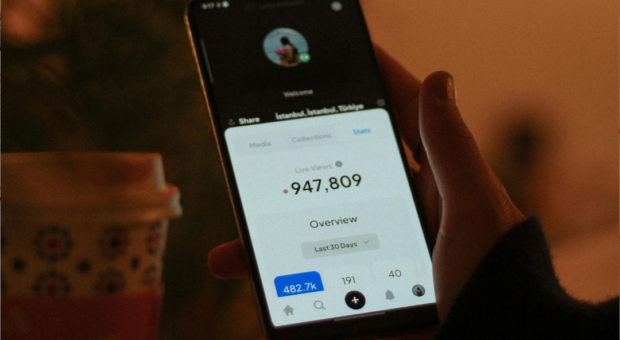
Categories:
Whether you’re creating a new product, a new brand, or simply launching a new campaign, you probably want to know what potential customers think about it before you go all in – but market research is notoriously expensive and time consuming.
Many small-to-medium-sized businesses think market research is a luxury afforded only to Fortune 500 companies and others with deep pockets. But thanks to social media and an influx of DIY research and survey tools, audience insights are now much easier to access, at any price point.
If market research is on your wish list, but you don’t have the budget for a professional research firm, here are three strategies for getting answers without breaking the bank.
- Bootstrap It
It may not be “statistically significant” but qualitative research can provide incredibly useful insights. Whether it’s IDIs (in-depth interviews) with existing customers, conversations with friends and family, or networking at industry events – the information you get from peers is a valuable resource for understanding and refining your offering.
While quantitative research can help to remove bias and confirm or deny inferences, qualitative insights are much more useful in uncovering the why, and the how to improve a particular offering.
In addition to utilizing friends, family, and current customers – there are also online tools such as Instapanel and GutCheck, that provide relatively low-cost ways to get qualitative feedback from potential customers, or members of your target audience. Results can be turned around in as little as 24 hours, and for less than $100, making these both cost- and time-effective research tools.
- Tap in to Social Media
Facebook, Instagram and other social media networks have long been heralded for their audience targeting capabilities, but while many companies use these tools for advertising, fewer have tapped them as a resource for market research.
Social media can be used in a number of different ways to get insight from your audience. You can use simple polls, surveys and open-ended questions to see what your current fans and customers think – or you can use targeted promotion to push those posts out to a broader or more aspirational audience to find out what potential future customers are looking for. Oakhurst turned to social media for insight into the packaging for their new Wild Blueberry Milk– and not only did they receive a plethora of feedback, but their new product went viral, too!
For more complex research objectives, social media can be used as a recruiting tool to direct the appropriate audience to a longer-form survey. Social media is also an excellent sandbox for A/B testing – i.e. launching the same post, ad or other creative to two similar audiences with only one variation and measuring the results. A/B testing is something all businesses should be practicing on a regular basis (whether you are specifically conducting market research or not) to help continually refine campaigns and improve creative. One of the unique benefits of A/B testing is that it measures your audience’s behavior, not just their intentions.
Consider this: when you ask someone a survey question or interview them about a product or piece of creative, they tell you what they THINK about it. But oftentimes consumers don’t know themselves as well as they think they do – and their actions can vary dramatically from their predictions. Take, for example, the 81% of people surveyed by Business Insider Intelligence’s 2018 Digital Trust Survey who said that in the wake of the Cambridge Analytica data scandal, they had little to no confidence in Facebook to protect their data. You might infer from that finding that Facebook membership would decline. The reality is that active users have increased steadily since the scandal, and usage (time on platform) has increased right along with it. We THINK that we don’t trust Facebook, but our behavior shows that we’re still not ready to call it quits. Since A/B testing measures behavior, and not opinions, the results are particularly useful.
Keep in mind that research obtained through social media is unlikely to be completely free of bias – and that depending on your audience, it may not provide a fully comprehensive sample. That said, if you analyze the results with a knowledge of those limitations you can still obtain plenty of actionable information.
- DIY…With a Little Help
While quantitative research is harder to come by in the cost-effective and time-limited space, it is possible with the help of DIY survey tools such as Survey Monkey or Qualtrics. Both platforms offer a variety of subscription levels ranging from free to 10,000+ a year, depending on your specific survey needs and whether you plan to recruit your own participants, or enlist their help in doing so.
While creating and managing your own online surveys can provide significant savings, consider enlisting the help of a professional to write your survey, and/or analyze the results. There are a number of “tricks of the trade” that professional data scientists use to help eliminate bias, increase statistical significance, and interpret data thoughtfully and carefully.
In the end, the old adage of “go with your gut” still rings true. But solidifying that gut instinct with both qualitative and quantitative data is the smart way to move your business forward.
About Ethos
Ethos is a multiplatform branding agency that develops and executes integrated marketing campaigns across multiple channels for companies inside and outside of Maine.
At Ethos, we believe that the most effective way to set a company’s marketing course is by finding its core truth – its ethos. We know that once we discover and communicate that core truth, we can truly make a difference for each client’s unique marketing and business objectives.
With Ethos, you get more than a marketing agency. You get a long-term partner whose goals are your goals.
Learn more about the Ethos approach and the work we’ve done for our clients. Want to have a conversation about your brand’s core truth? Contact us!

